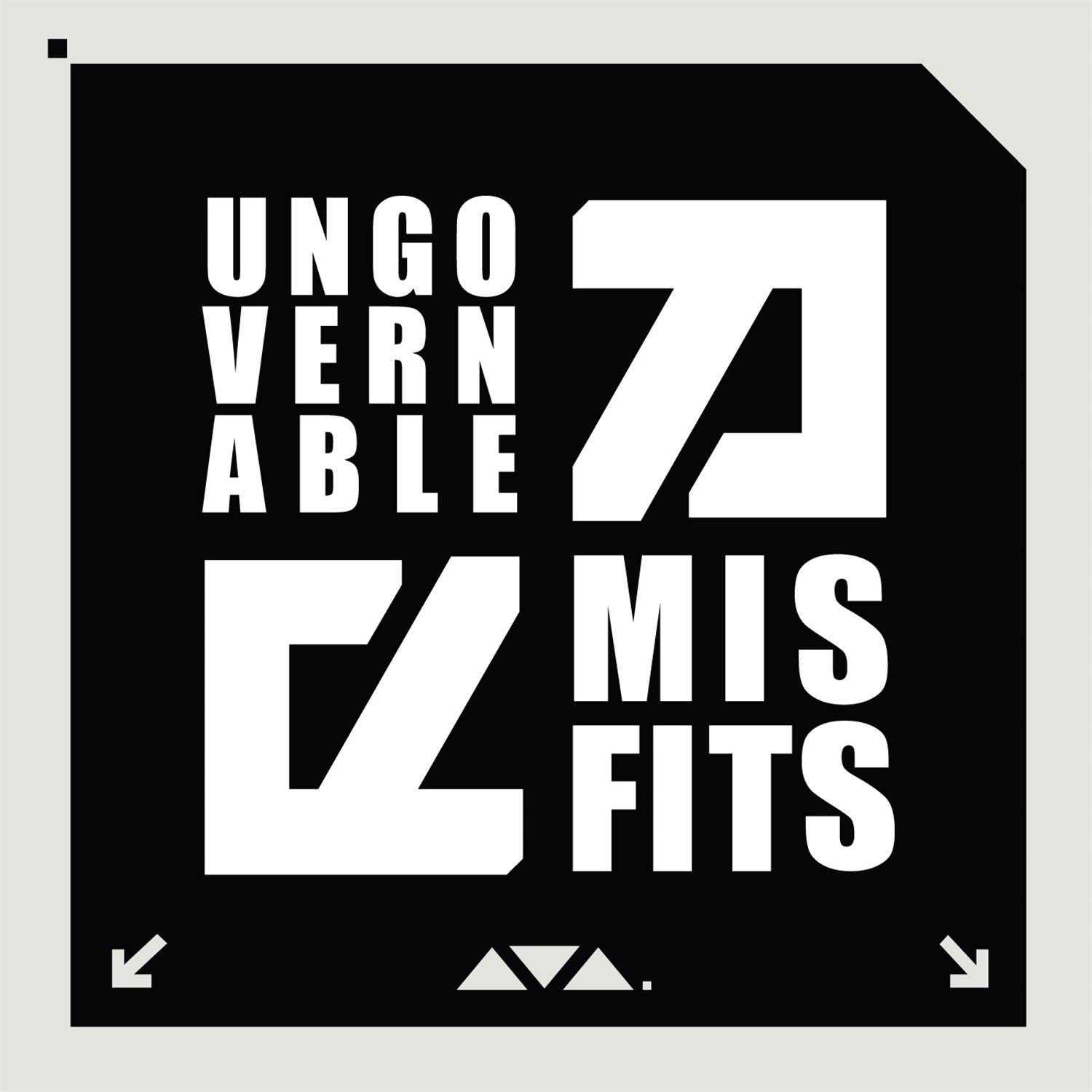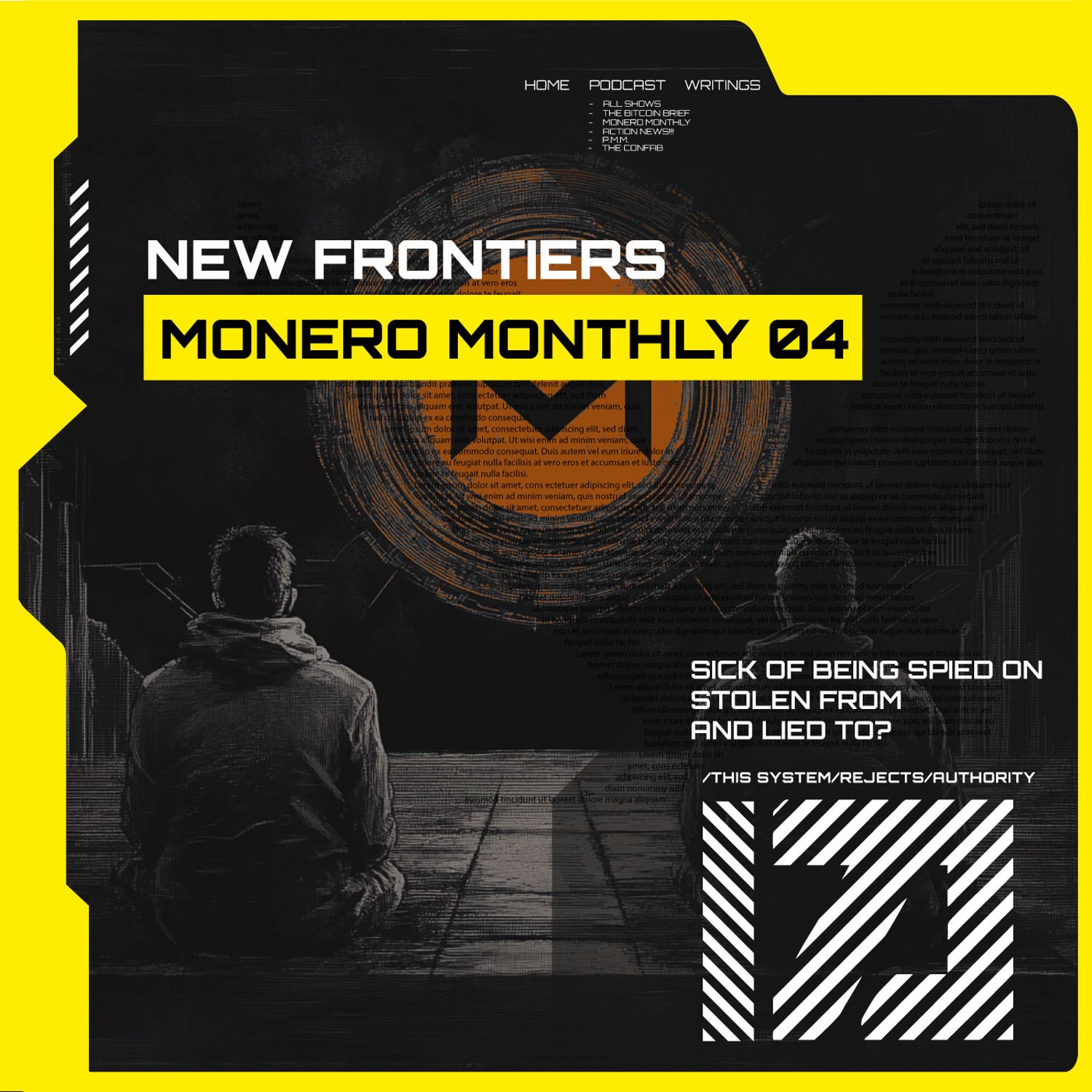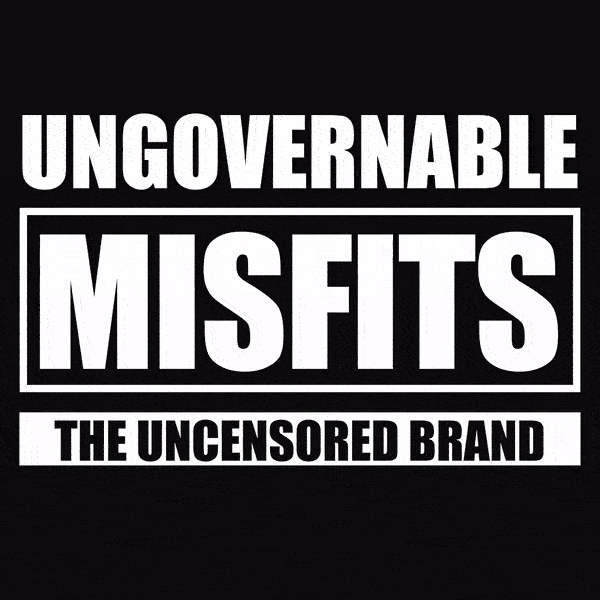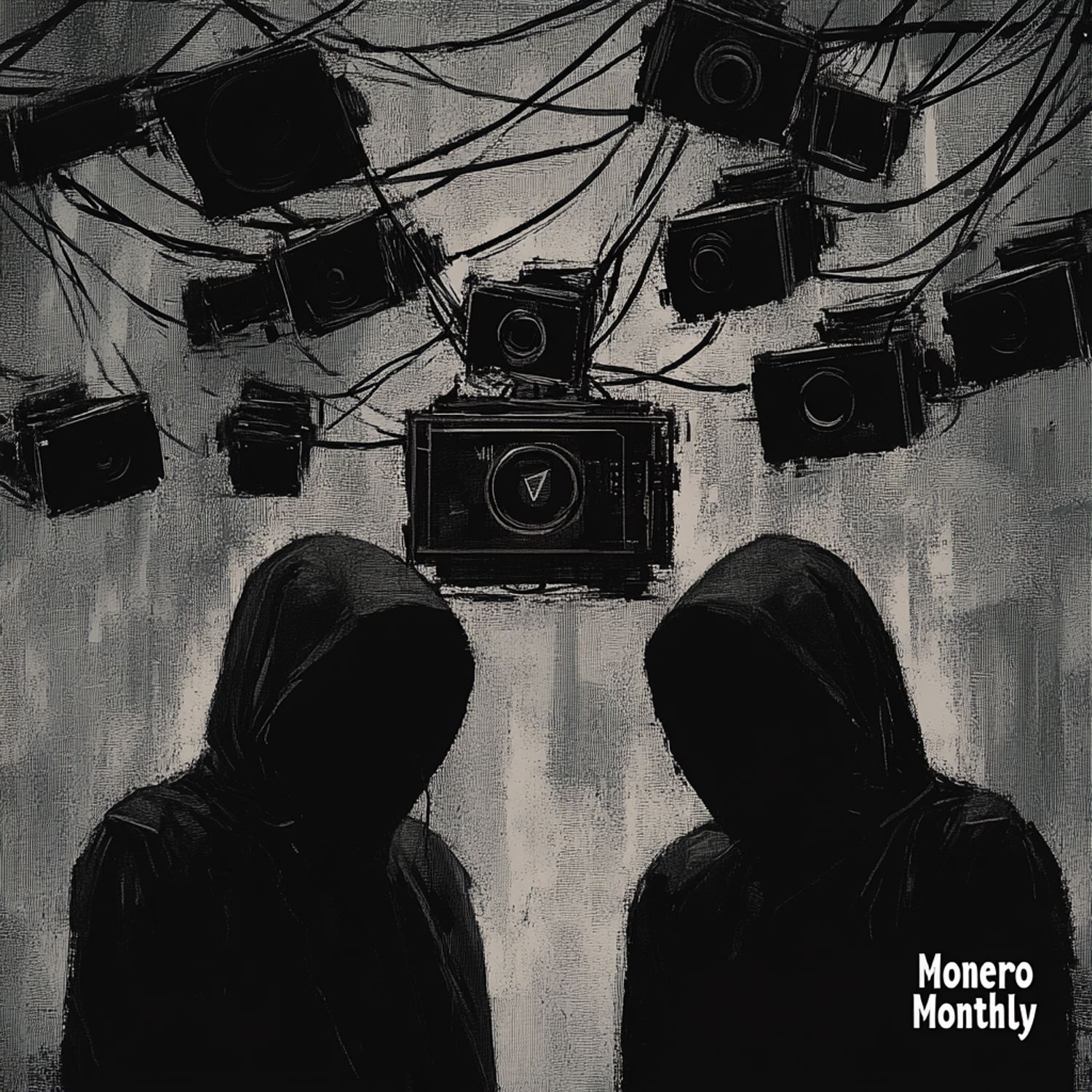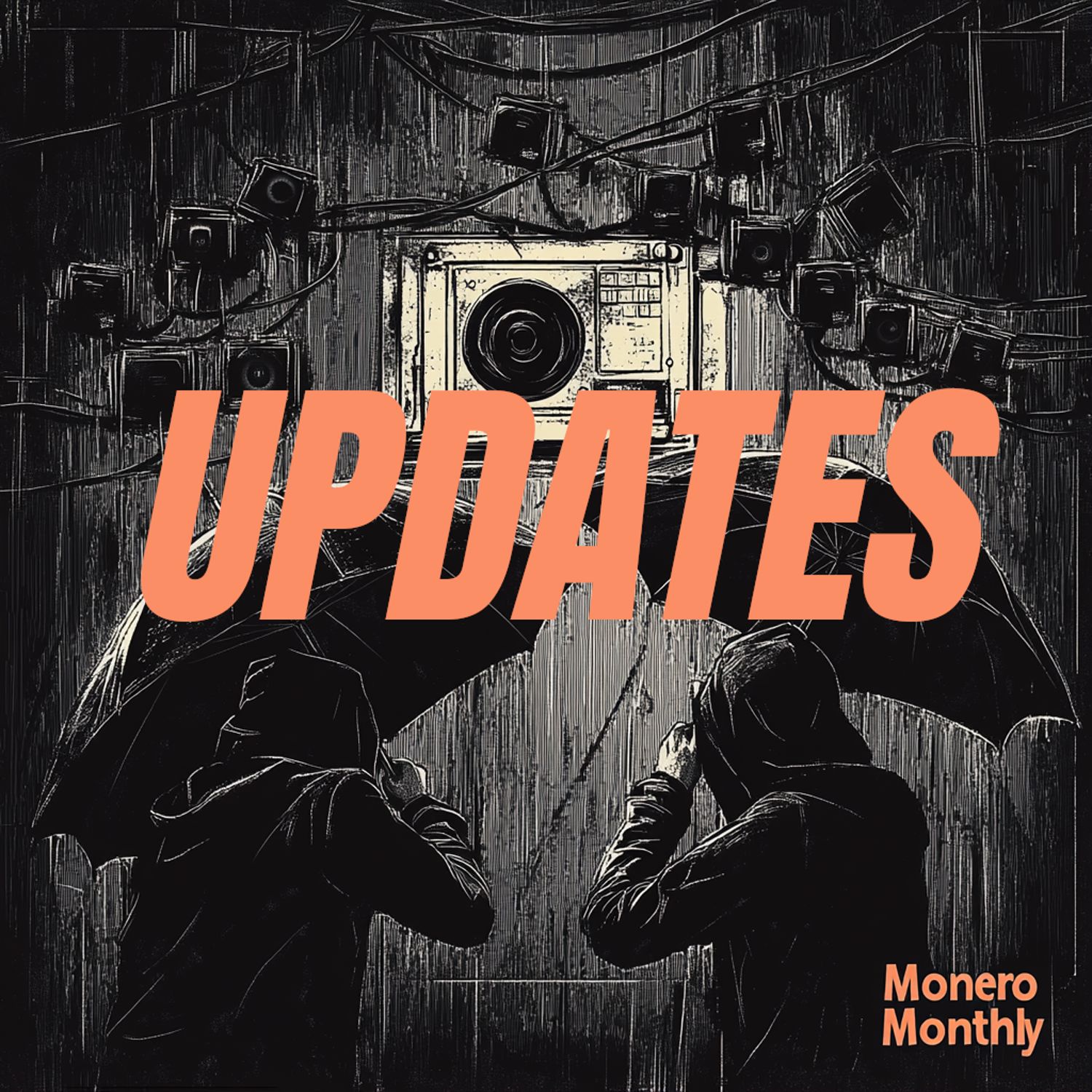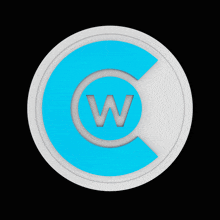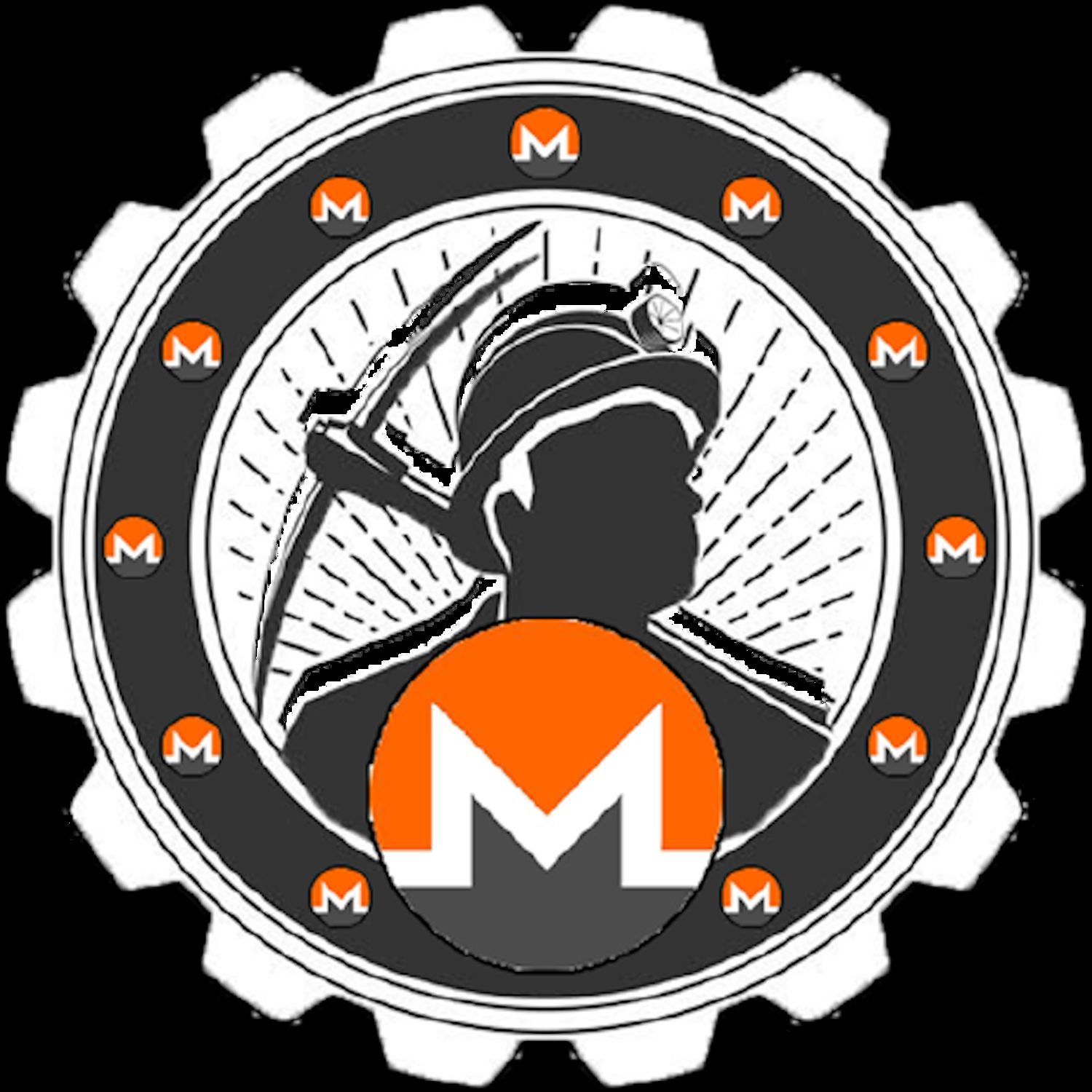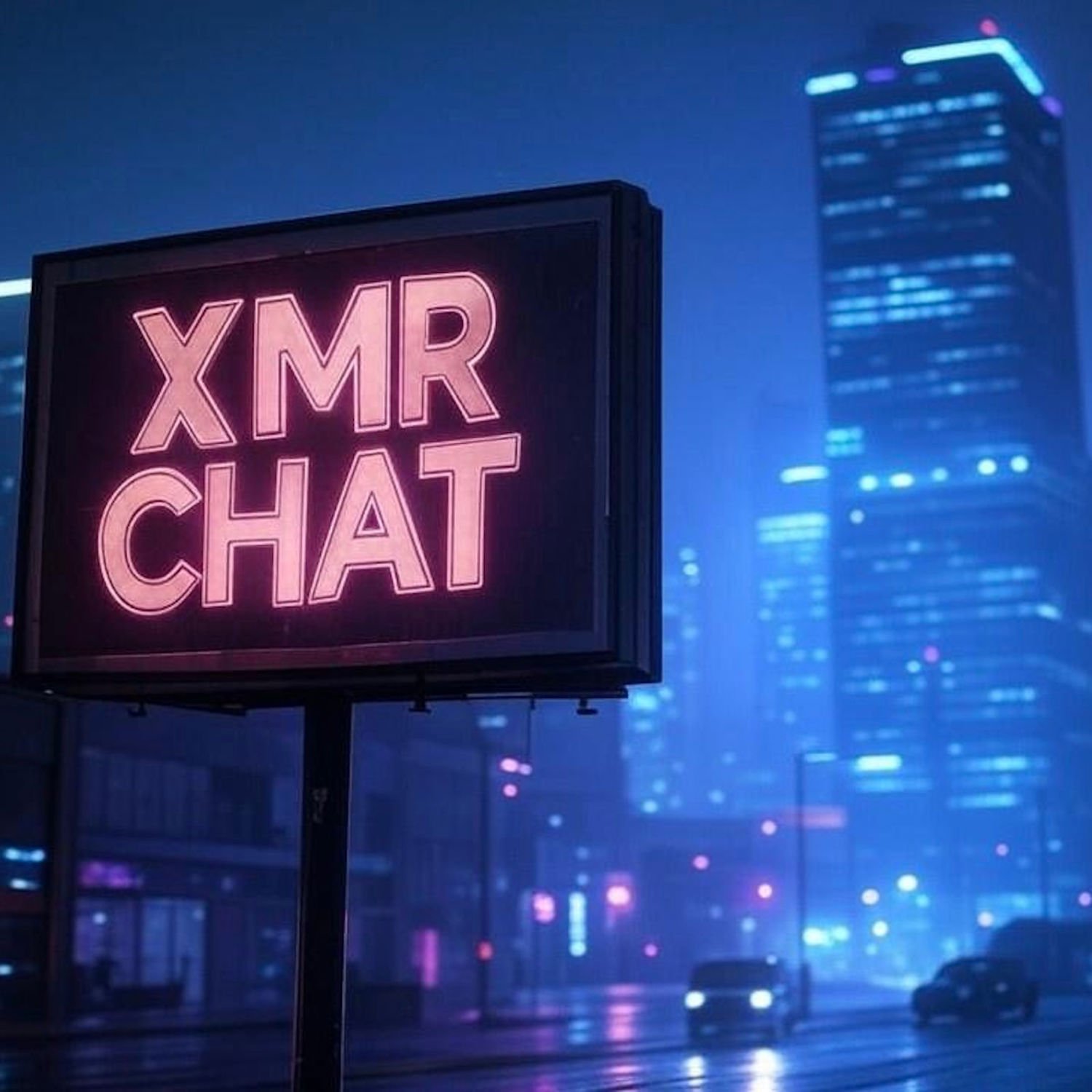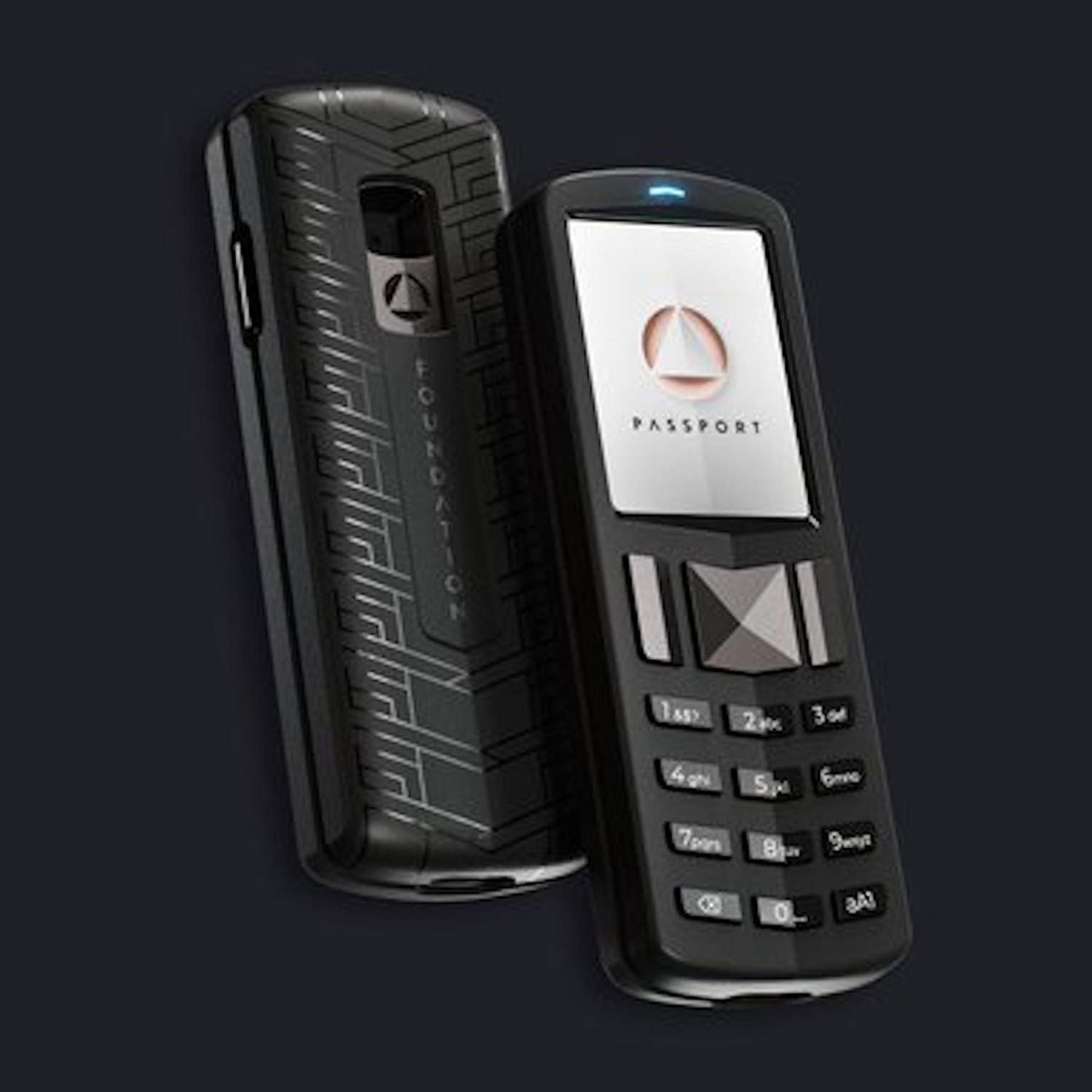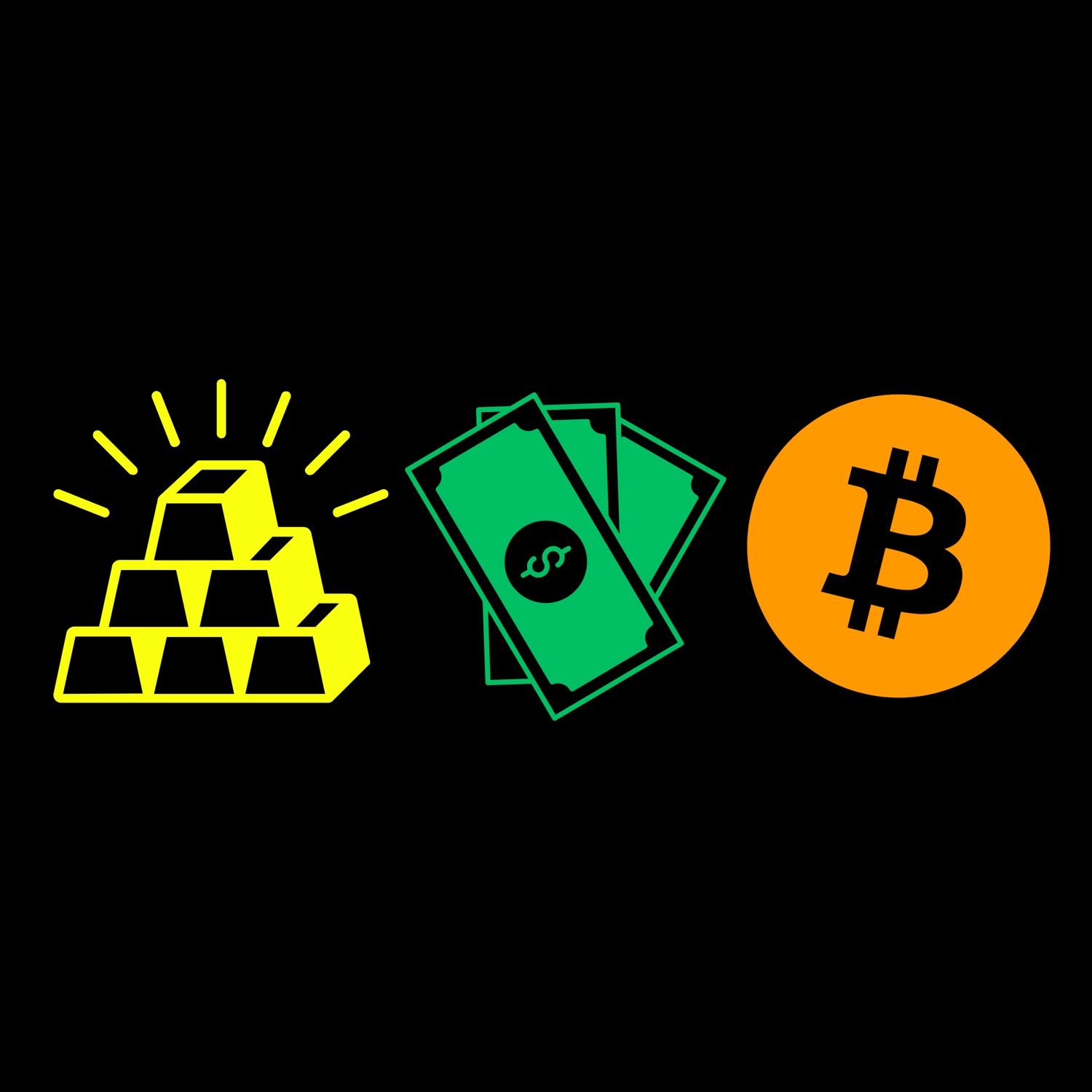FROSTLASS Audit Complete for Serai
Explain Serai
- AMMs generally
- BTC, ETH, and XMR to start
- Lack of Monero support in AMMs so far
- Attempted by Thorchain and abandoned
- Threshold multisig as needed by an AMM was practically impossible before FROSTLASS
Merge-mined with Monero
Privacy-preserving chain with expanded functionality
- TariScript is a Bitcoin-like script that allows extensive functionality to be built on Tari
- MimbleWimble is used to provider very good scaling with pretty good privacy
- Cake Wallet working on support ahead of mainnet on 4/23
SOFTWARE UPDATES
Cake Wallet v4.24.0 released
- Decred support
- Background synchronization for Monero
- UI enhancements
- Swap flow updates
- Allow coin control and fee selection in swaps
- Send confirmation bottom sheet
- Send confirmations are now handled in a new bottom sheet, with far better formatting of addresses and much more.
- Swap flow updates
- XOSwap integration
- XOSwap is a new crypto <> crypto swap aggregator, and is now available to all Cake users by default.
- Improved backups
- Remove Haven cryptocurrency support
- Alternate node implementation for Monero, written in Rust from scratch
- Will get native Tor support via Arti down the line
* Added RPC-SSL support for Monero node connections * Removed deprecated --config command line parameter * Faster initial sync (0.5-1 seconds saved on verification of blocks) Bugfixes: * Updated internal dependencies
[[LINKS]]
VALUE FOR VALUE
Thanks for listening you Ungovernable Misfits, we appreciate your continued support and hope you enjoy the shows.
You can support this episode using your time, talent or treasure.
TIME:
- create fountain clips for the show
- create a meetup
- help boost the signal on social media
TALENT:
- create ungovernable misfit inspired art, animation or music
- design or implement some software that can make the podcast better
- use whatever talents you have to make a contribution to the show!
TREASURE:
- BOOST IT OR STREAM SATS on the Podcasting 2.0 apps @ https://podcastapps.com
- DONATE via Monero @ https://xmrchat.com/ugmf
- BUY SOME STICKERS @ https://www.ungovernablemisfits.com/shop/
FOUNDATION
https://foundation.xyz/ungovernable
Foundation builds Bitcoin-centric tools that empower you to reclaim your digital sovereignty.
As a sovereign computing company, Foundation is the antithesis of today’s tech conglomerates. Returning to cypherpunk principles, they build open source technology that “can’t be evil”.
Thank you Foundation Devices for sponsoring the show!
Use code: Ungovernable for $10 off of your purchase
CAKE WALLET
https://cakewallet.com
Cake Wallet is an open-source, non-custodial wallet available on Android, iOS, macOS, and Linux.
Features:
- Built-in Exchange: Swap easily between Bitcoin and Monero.
- User-Friendly: Simple interface for all users.
Monero Users:
- Batch Transactions: Send multiple payments at once.
- Faster Syncing: Optimized syncing via specified restore heights
- Proxy Support: Enhance privacy with proxy node options.
Bitcoin Users:
- Coin Control: Manage your transactions effectively.
- Silent Payments: Static bitcoin addresses
- Batch Transactions: Streamline your payment process.
Thank you Cake Wallet for sponsoring the show!
(00:01:14) Welcome Back
(00:20:46) The Community Crowdfunding System
(00:22:44) SOFTWARE UPDATES
(00:22:50) Cake Wallet 4.24: Background Sync
(00:26:14) Cake Wallet 4.24: UI Touches
(00:28:03) Cake Wallet 4.24: Preem Backups
(00:32:49) Cup Rate: A New Node Implementation
(00:35:55) P2Pool Software Update
(00:38:14) XMR CHATS
(00:57:54) BOOSTS
(01:10:13) See You Next Month
The business will fall victim to a ransomware attack every last seconds, eleven seconds.
[00:00:07] Unknown:
I am investigator investigator investigator. And I work supporting Our agenda for today, we're gonna start with just the basics of Monero. What it is, what it is, how it works, how it works. Monero is considered a privacy token. The world's most private
[00:00:34] Unknown:
privacy. Which means that in high, virtually all transaction details are exchanged. The world's most private
[00:00:41] Unknown:
privacy. Hello, mate. A month has gone past. I can't believe it's episode four already.
[00:01:21] Unknown:
Man, every time you shoot me a message to ask me to set up a date to record again, I don't understand where three or four weeks has gone. It doesn't it doesn't make sense to me.
[00:01:31] Unknown:
It is proper crazy, isn't it? Yeah. Every time I do it, I think because it's like coming up to the end of the month, I'm like, it can't be. But a lot has changed. A lot has happened in the last month. Some updates on the k quality side, lots of updates on the ungovernable side. And it looks like from reading through your show notes, which I just said to you, a lot of it doesn't make sense to me at all. There is a lot going
[00:01:56] Unknown:
on in the Monero world, so let's get into it. Let's jump right in. This week, we'll stay out of, like, having one big topic and try to keep this one a little bit shorter. We'll dive into some updates first in the broader Monero ecosystem. And the first one actually relates back to what we talked about last week last month about peer to peer exchanges. It really does feel like a week ago. I I I'm just gonna keep saying it, but I don't understand how a month has passed. But last month, we talked about peer to peer exchanges, and one of the ones that I mentioned that we talked through a little bit was called Sarai, s e r a I. And I think it's a good topic to spend a little bit more time on this month because there was an announcement about a week ago of a key piece of Sarai, like, a necessary building block having an audit completed on it. And the details of the audit are not probably interesting for the vast majority of of y'all out there listening.
The short story is that this was kind of the last main piece to require an audit and the biggest Monero specific piece that needed to have a good audit to make sure that the building blocks of Sarai worked well. Kind of like taking a step back on what Sarai is. I've touched on it briefly. TLDR is that it it's like Uniswap or Thorchain, but built in a way that better handles Monero specifically. So Sarai at launch is gonna have Bitcoin, Ethereum, and Monero support and will function like Uniswap. So if you've ever used Uniswap or Thorchain, it basically acts as if you're using a centralized exchange where you're not connecting with a single peer. You're not swapping with a single individual who happens to have made the order that you want to take like this or RoboSats or something like that. It's different than atomic swaps as well. But rather there's essentially It's not an order book then. There's no set order book. It essentially functions like a central liquidity pool where we don't need to get too into the weeds of AMMs, but the general concept is that people can provide liquidity in the two tokens for that specific pair. So, like, we're talking Bitcoin at Monero.
If I want to provide liquidity to try and earn some profit, I can provide both Bitcoin and Monero to Sarai network, and then people who want to swap between the two are going through the liquidity that I'm providing, and I earn some income on that. Ah. There's a lot of potential ways you can also lose money providing liquidity. There's, like, impermanent loss and all these complex topic. It's not something I'm telling everybody should go out and and necessarily provide liquidity when Sarai launches if you don't understand the process more fully. But that's kind of the basics of how it works is there are entities who will step up in the network to provide liquidity for each pair against Bitcoin, Ethereum, and Monero. So pairs between all of those. And then when you want to actually make a swap between, say, Bitcoin and Monero, you're able to do that. You don't have to have a specific person who has an order that you want. You're able to just swap however much you want when you're ready. That all happens on chain on Sarai's blockchain, which is a little different than Bitcoin or Monero. Decentralized, but with a core set of nodes who are actually participating in the network, it's not something where just, like, anyone can join the network because you have to actually have liquidity to be able to stake, essentially, to join the network. But when you actually make those trades, they happen on chain. They're actually finalized on chain on Sarai's chain, and all the details of the trades are all published publicly as well, which is very good for making sure that trades actually happen and that the amounts that you should get, you actually get a lot of ways to be able to easily verify that just the same way that essentially Bitcoin works. Everything is extremely transparent by design. That isn't necessarily a downside of something like Sarai where the privacy is worse because if you swap from Bitcoin to Monero, that swap will be visible to anyone who looks up the Sarai blockchain. They'll be able to see that there was a Bitcoin swap from this address to this specific Monero address as well, which is a a downside of it. But, again, if we're talking in OKC funds, that's not really a problem in this case. Yeah. And you should assume if you're using a central exchanger that any law enforcement nation state chain surveillance company has access to that same data. So it's not a huge loss, but it is just kind of an important piece there. It's something to look out for, but I think as we batched onto people for years and years and years, you have this problem anytime you're dealing with Bitcoin,
[00:06:09] Unknown:
anytime that it's KYC'd. It doesn't matter what you're doing, really. You're gonna have problems, and so it's always best to just sell it back to an exchange and buy no KYC. So, like, yes, it's a downside or something to look out for, but
[00:06:23] Unknown:
kind of everything is when you're dealing with Bitcoin in that way. No. You're right. It's it doesn't really change the paradigm at all. It really just brings Bitcoin's ultra transparency to instant exchanger experience. Mhmm. And that's ultimately fine here, I think, in the end, but it's definitely something that people should be aware of. And ultimately, like, the big win here is when Sarai launches, you'll be able to have the same sort of experience that you get right now in cake wallet or through trokador or through any of these kind of instant exchanger services.
You'll be able to get that but without actually using a central exchanger who actually takes custody of the funds for the short term that they're making the swap and then sends funds out to you. You know that if you make this swap on Sarai, it will execute execute no matter what. There's no chance of shotgun KYC. There's there's none of the core hitches and issues that can occur with the centralized exchangers. And then, obviously, also alongside that, you just get a much more resilient tool instead of one where a government engine just can just go to the CEO of instant exchanger a and say, you're done. Shut down. That's not gonna be possible in the same way with Sarai.
[00:07:29] Unknown:
Is there even though there isn't risk of something not happening once you've decided to make the trade or, like, no person in the middle trying to shut things down or stop transactions, is there any sort of, like, rug risk or something? You said that there's, like, centralized nodes that hold the liquidity. Is there some sort of potential attack where they could conspire and steal funds or any sort of fears around that where people need to be careful or, like, think carefully if they're doing larger amounts?
[00:08:02] Unknown:
It mostly applies to people who would actually provide liquidity, who would be what's called an LP or liquidity provider. Because when what you're doing when you're being a liquidity provider is you're essentially sending your funds to this core set of nodes on the Sarai network and entrusting them to use those for you. The way that it actually works, though, is that it's very large threshold multisig wallet shared between all of the nodes, the economic nodes within the Sarai network. And each of those nodes has actually bonded cryptocurrency themselves to be able to be one of those economic nodes. If a single entity or even a minority try to rug pool and steal funds, they wouldn't be able to because they wouldn't have a threshold of the multisig to actually be able to do that. So that prevents just the simple attack by one person or five people trying to work together. But if you did have a majority, I don't know off the top of my head what the actual threshold is for Sarai at launch. It might not even be set yet necessarily, but it will be a majority threshold necessary.
If that number of economic nodes do conspire to steal funds, they could steal funds. It's the same basic model as any kind of good centralized exchange where if enough employees who have multisig keys decide to rogue you. It can happen, but this is gonna be a far larger threshold. We're talking, like, 60 out of a hundred or something like that. Like, a very, very large threshold where each of these nodes have an economic incentive not to try to rogue you. Because if they try and they fail, the bond that they've put forward to become an economic node is slashed, and they lose all of their money. And the user doesn't lose any money. Is it kind of like fidelity bonds with what's the coin joint implementation
[00:09:39] Unknown:
that is Join market. Is it kind of that kind of idea where there's some protection against what do you call it? Civil resistance? Civil resistance. Civil attacks. Yeah.
[00:09:50] Unknown:
It's similar in concept. The idea in join market is a little different because I think the core property in join market that Fidelity bonds are trying to achieve is to make sure that one entity can't get the ability to view through coin joins because they're the majority of people that users are mixing with. Yeah. So there, it's focused about privacy and not loss of funds because the makers and joint market can't actually steal funds. They don't have any ability to do that. Mhmm. Whereas here, obviously, it's not privacy related, but it's the same idea. It's that we wanna make sure that, let's say, there's a hundred economic nodes and 66 have to conspire to steal funds. We wanna make sure that 70 out of a hundred nodes are the same entity who just spun up these economic nodes. Yeah. Which is why you won't be able to just spin up a Sarai node and be a part of the network. Yeah. Exactly. That's what I was sort of getting at. You could if you bonded funds to be able to prove that you have the money at stake, which allows a lot of the economic game theory of Sarai to actually function. Interesting. Okay. That's key to make sure that that doesn't happen. Again, that's only really for liquidity providers.
There's very little risk for the average user actually making a swap. I mean, technically, it is possible for for there to be a problem there. Like, if that rug happened while your swap was I don't even know if that's possible because the way that execution works, it happens immediately. So I don't know. I'd have to look into that a little bit to see if there's even any chance of losing funds. I'll tell you what. I'll give it a go because if anyone's capable of fucking something up, it is me. So I'll give it a go. If I lose funds, then it's possible. There we go. If I don't lose funds, it's impossible because it would definitely happen if it was. Max will be the guinea pig. That's how I feel like I am with lightning for years. Every time I try to do anything in lightning, it will fail in catastrophic ways. And everyone I'll talk to you. I'll talk to all these people, and they'll be like, dude, it just like, this just works. I I never have problems with this. I'm like, that's that's great. That's great. But I seem to have, like, the QA testers curse when it comes to
[00:11:43] Unknown:
to lightning. But you have a greater gift where you have the QA testers curse with everything. Across everything. Yeah. Well, for the lightning stuff, you can join a little group with me and Barn and Jordan because anytime we do anything on lightning, there's a fucking problem. And almost every day, it's like, oh, fucking lightning.
[00:12:02] Unknown:
There are reasons that I don't run a node at home anymore for lighting. I I did for many years, public and at home. It's just everything that could possibly happen happened to me even if it should have been totally stable. I keep it easy. That makes me feel better. If you have the problems, it makes me feel better. You're not alone. On that note, I I think that pretty much wraps up the concept of Sarai. It's a really, really exciting tool because what it means is that we'll have much more resilient, much more decentralized ability to swap between Bitcoin, Monero, and Ethereum, which really continues to open up this world where people can just use the tools that work best for them. I am really excited for that. There's no ETA on when it will actually release, but I wanted to cover it because what just happened this last week was that the Monero multisig sig portion that's necessary for this to work well was audited and shown to be secure. That's what I was gonna ask you. I think I sent you a voice note about it. Is multi sig something that's already
[00:12:56] Unknown:
used by many people in the Monero community as single users, or is this more something that would just be used for exchange or that kind of thing? Do you know what I'm getting at? Are there people who are gonna be using multisig signing devices with Monero and doing things that way? Because I only ever experienced people just using it on their phone with no hardware generally and generally not even passphrases.
[00:13:21] Unknown:
There's kind of a long backstory here. Essentially, Monero's multisig was totally broken for a very long time. And so the same kind of, like, multisig concept that evolved within the Bitcoin self custody space never really happened in the Monero space because multisig was so broken with Monero for so many years. In my understanding, it was fixed and is usable now as is, but there's again, just kinda because it wasn't usable for so long, no one really built around it. So there's not good tooling around it. Mhmm. But the actual, like, building blocks within the wallet APIs and everything are there. There was a corporate collaborative custody tool. It was called Rhino. Similar to, like, Casa or Unchained, that sort of idea, but they were catering specifically to businesses.
They did that with Monero multisig. It's absolutely possible to have the same kind of multisigs within Monero Okay. As in Bitcoin, but the tooling is just not good for it right now. Okay. I did talk to Luke, the main author of Sarai and the guy writing all of these protocols about frost blast, the specific tooling for for Sarai. And, basically, it's pieces built around the multisig that are just totally unnecessary for the average person. It's necessary in Sarai because you need the ability to detect which signer of the group of signers is malicious or not cooperating properly. Like, it's a lot of stuff that has to do with the decentralized nature of how signing within Sarai works. Yeah. That wouldn't really apply to you with your three hardware wallets or something like that. But it is definitely possible. It's something that I want to explore at cake, something that's kind of on the to do list. I don't even know if it'll be, like, a 2025 thing. But I think especially something like a two of three with Ledger, Trezor, and Cupcake would be really interesting to build out and let people start to be able to actually access multiseg for the average person. But you're right that most people right now in Monero are either using a hot wallet or they're using Ledger or Trezor to actually custody the funds, but pretty much no one's using multisig at this point in Monero.
[00:15:17] Unknown:
It's almost like a cultural thing because there's a lot of Bitcoiners who actually probably only hold a few hundred quid or a couple of grand or something like that, and they've still got, like, a three of five multisig or using Casper or using one of these things and multiple signers and, like, their setup costs more than what they hold kind of thing. And then you've got people who have got a lot of Monero who just like, yeah. I just have a single signal on my phone. Like, I don't have a passphrase. It's fine. That's secure. I guess it is. It's just what you get used to and what everyone else does. You go a bit over the top sometimes. I think, like you said, a lot of it comes down to culture where there isn't this culture of ultra long term HODLer
[00:15:54] Unknown:
as much in the Monero space. We're very much more centered around using Monero frequently. Obviously, not everyone. There are a lot of people who do save in Monero, but it's just a very different culture because we didn't evolve the same kind of digital gold huddle forever kind of thing that would lead people to think that they need, like, a five of seven CD based multi sig, Lenovo, like there's not that craziness in the Monero community often for the better. Like, the amount of people who actually lose funds because they're in a hot wallet versus the amount of people who lose funds based on the complexity of their custody setup is probably wildly in favor of those people just storing all their money on a hot wallet, but it still does terrify me when someone will, like, reach out and support or someone would be, like, just showing me a screenshot at a conference or something or show me their wallet. And I'm like, dear god. Don't have that in a hot wallet. Like, you gotta do something.
[00:16:46] Unknown:
It's scary. Yeah. The culture that I've seen with the Monero community, it really strongly reminds me of the samurai community. It was nobody really using hardware. Everyone just using the hot wallets. They were using and spending and very much against the HODLer mentality.
[00:17:05] Unknown:
That's the closest thing to the Monero community that I've seen. So like you say, I think it's cultural. I definitely see that there were a lot of similarities there. And when you talk about that, like, how many samurai users lost money to theft from their wallet? I don't know of any. I mean, I was Zero. Yeah. Saying there weren't any, but I don't know of any. Because it's just like the chances of you being individually targeted, especially on your phone. I think that's the other area where people often forget that mobile security is wildly better than desktop security in the vast majority of instances. So, like, keeping your money in a hot wall on your phone. Yes. I do not recommend it for, like, life changing rounds, obviously, but the security of your mobile device is so much better than your desktop to the chances of some sort of malware or something stealing funds from Android to iOS wallet on a phone that's reasonably modern and kept up to date. It's just super slim. Still good to use a hardware wallet or cold storage of some sort, obviously. That's another area where mobile privacy is really, really helpful. I got just two more quick ones, and we can get into software updates. One that I know that that Jordan mentioned and that some people have been asking about is this other cryptocurrency side chain thing called Tari that has a a long running history of building around Monero. It's something that's man, it's been around for, I don't know, probably four or five years, and I honestly gave up hope on it ever existing, a long time ago because the promises have been so great. It's never actually come to fruition. But supposedly, they're actually launching to main net in April. So in about a month from when we're recording this, they're gonna be launching their main net. The TLDR for what they are is really it's meant to be a privacy preserving programmable cryptocurrency.
So think something in between Bitcoin and Ethereum. Not as crazy as Ethereum, not as simple as Bitcoin, but with a focus on privacy. So it's built from the ground up with a lot of the privacy functionality of Monero and then a lot of the privacy and scaling functionality. Like, Litecoin has Mimblewimble extension blocks. Tare uses Mimblewimble to focus on scaling, but Mimblewimble also provides reasonably good privacy because it means that a lot of the details of transactions never get published on chain. Mhmm. So the real focus is NFTs, simple smart contracts, escrow, building some simpler tooling. Again, don't think, like, fully Ethereum level. You can do literally anything, but also a lot more than you can do on Bitcoin today, but with really strong default privacy. So So it's it's a really fascinating idea and something that I think the space has wanted for a long time, and most of the people who have theoretically tried to provide this have essentially scammed or built in a bad way. So I'm really excited for it. The actual only relationship that Atari has with Monero that I think has been very confusing over the years is that it's not a side chain. It's not a layer two. It's its own separate blockchain with its own currency, but it is merge mined with Monero.
And for those who don't know, essentially, what merge mining is is that when you mine Tari, you are also mining Monero. You're essentially doing the same proof of work for both and able to submit to both networks and vice versa. Monero miners can easily enable mining Tari at the same time. So it's just a way to essentially help secure both networks and provide stronger financial incentives to mine both networks at the same time. This already happens with multiple cryptocurrencies alongside Bitcoin today, even if it's not talked about very often. So that's the only actual relationship to Monero. I'm in no way, like, shilling it or telling you to buy it or anything like that. It has some interesting promises, and I know a few of the people behind it as well as we at k Qualit are working on adding support for it, Hopefully, around the time that the mainnet launches in April, maybe a little bit after that. It's a cool concept. I thought I'd mention it because it's the common thing that's talked about in the Monero ecosystem, but it's kind of been viewed as a dead project for a while. So I'm curious to see if it And then last but not least, I'll just quickly mention that there's multiple CCS proposals which are ready for funding, which I mentioned it before as well. But, basically, within the Monero community, the way that different efforts get funded, devs to work on the core code, entities to build out marketing, to create videos, that sort of thing. The way that funding works is it's all just crowdsourced donations. So there's no premine. There's no dev fund. There's nothing that the Monero core team or developers can give to fund things, but people just fund things out of the goodness of their heart with donations. Mhmm. So the way that works is people can just submit a proposal of what they want to be funded for. If the community is good with that proposal, it'll move into this ready for funding state where people can donate directly to that proposal. And then when those people who made the proposal complete milestones, they get paid out from the donations.
Really simple process, but it's been really effective from Monero over the years. And there's multiple new proposals that are ready for funding right now. It's not something where necessarily you have to donate to anything. It's one of the nice things. It's all just up to what you want to do. But it is a really cool way if you want to see a specific thing in Monero improve or grow. Keep an eye out for who's requesting funding and what they want to do, and it can be a good way to get involved financially and helping to grow the Monero ecosystem.
[00:21:58] Unknown:
Where do people go to, like, view these different things that they could potentially fund or to propose things? Yeah. It's called ccs.getMonero.org.
[00:22:08] Unknown:
So we'll definitely have, of course, link it in the show notes. Okay. And I'll link to the Monero observer article that has some more details on exactly what's ready for funding right now. But, yeah, you can see the ones that have been proposed. All the proposals actually happen in GitLab before they actually make it to the website. So for new proposals, there's a process to submit a new issue on GitLab, then the community votes on GitLab. It's a very simple process. And then things that are approved by the community moved to ready for funding. Those are then visible on the website with their own unique donation address, and then people can actually fund them when they get to the funding goal that they've set. Then, obviously, then they're just held until they're ready to actually complete a mouse down and get paid out. Cool. Let's roll straight into the software updates. Just a few this month, a little bit of a slower month in the Monero space. The first one is cake wallet. We just released version four dot 24, which is a big one that we've been working on for quite a while, it seems, on a lot of these features. The biggest one for Monero and the one to focus on first is that we had background sync for Monero a long time ago in Cake Wallet. I say we. It was before I was there. So before it was a we, I guess. Mhmm. But we had it in. It didn't work quite right. We had a lot of problems with how the functionality actually was, and so Cake yanked it out a while back. I I wanna say, like, eighteen months or two years ago. They yanked out background sync. But it's something that especially with the UX around Monero and just the wait time to sync a wallet if you haven't thought about it before you go to a merchant or something like that. It's a real pain in the ass. It's one of the, I think, the biggest problems with Monero's usage growing with Monero's adoption. It's just that pain point of when you actually wanna use Monero, you're often having to wait thirty seconds, sixty seconds, five minutes, ten minutes to sync depending on what your network conditions are, how long it's been since you've synchronized your wallet, since you're having to download so much data from each of the blocks that you haven't synced yet. Mhmm. So, obviously, background sync is a huge, huge important thing that really every Monero wallet should be focusing on. So we kinda went back to the drawing board to build out a better background sync system, and I think we're finally ready to really roll out the first pieces of that. This initially just applies to Monero, but it will be for Bitcoin silent payments, like CoinMWeb, Decred, Zano, Baldero.
At least those have more intensive sync processes. And, basically, how it works is you just go into the settings and to the connection and sync settings. You give cake permission to run-in the background, and you enable the background service with the toggle, and you're done. There's no, like, persistent notification necessary. There's no complex setup. You just do that, and then the default setting is to sync your wallet daily. So daily, a task will just run-in the background to synchronize your wallet all the way up to the tip. It'll synchronize all wallet that are supported. So like I said right now, just Monero. Mhmm. And it'll do that. What's per day by default? There's also hourly and a every fifteen minutes option. Normally, you don't need the other two. Normally, daily is fine, but it's a good option still if you know you're gonna be spending a lot. Wanna make sure that you're synced up all the time. Mhmm. That's the initial implementation of that. Right now, there's not a way to say, like, only on Wi Fi or only on charging. And so I know that there's some downsides there for people who have tight data gaps. You might not want to enable this yet, but that's the next step here. So we wanted to get this MVP out to start the process, and then I will be adding more kind of smart functionality around it to give users more control over when the synchronization actually runs as well as adding other currencies. It's a huge step forward for the the user experience of Monero so that now for most users who enable this,
[00:25:25] Unknown:
you're looking at most at syncing, like, 700 Monero blocks at a time rather than who knows how many thousands before. So That's not bad. It's definitely a big improvement there. Yeah. Because how many times I've gone to go and use my phone, like, go and send someone an arrow, and then I'm like because it's a different phone to what I take out and about with me. And then I'm like, fuck. I wanna send one now, and I've gotta head out in five minutes, and then it's, like, sinking, sinking, sinking, sinking. I've gotta make a payment. I'm like, I'll leave this open. I'll come back to it later.
[00:25:54] Unknown:
So that would be handy. Yeah. I think it's gonna be really huge. And it's also with the way silent payments work for Bitcoin. It's gonna be really vital for that, especially before we get ready to have kind of the everyone who self hosts can do the silent payment sync on their server approach, which is probably quite a ways out. Mhmm. This will be a really nice improvement for that as well. So I'm I'm excited for that on the Bitcoin side as well. Cool. Other main changes in this version, there's no others that are Monero specific, but one that applies to all currencies within cake is that the actual, like, sending confirmation dialogue, which was absolutely hideous before and made me wanna gouge my eyes out every time I went to send a transaction. I got that little modal in the middle of the screen that had the text too small to read and the addresses on our new line, and it hurt my soul.
So we we focused on finally revising that and starting to shift to just much better user experience in UI overall. So the first piece where you'll see that is when you actually go to send funds, you'll do the transaction as normal. That UI hasn't changed yet, but it is going to change and get better. And then when you actually hit send, instead of that weird modal that you can't really do anything with in the middle of the screen, you'll get a nice little bottom sheet that pops up. It'll have, in a much better way, the address that you're sending to displayed in the format that the foundation guys actually are the reason why I know about it. It's from Bitcoin design. Mhmm. But it's a nice way to display addresses where you do it in blocks of a few characters, and each set of blocks is alternating between kind of bold and light font. It just makes it much easier to actually verify the address itself rather than just having this, like, very long string of characters, which in Monero, it's much longer than even a Bitcoin address.
It's much easier to actually, like, make sense of what the address is and validate, especially, like, the first six last six characters that most people do. Nice. So you'll have that on that send bottom sheet. Just looks way nicer overall, way easier to actually use, especially if you're sending to multiple recipients. It's, like, infinitely better than it was before. So I'm really excited for that. That one affects every cryptocurrency, so it's not Monero specific. But that's kind of a first look at a lot of the changes that we're bringing to the broader UI there. Nice. I think the only other one that's probably really applicable to people is that we've also been working on backups in Cake Wallet. So for those who don't know within Cake Wallet, you obviously should back up your seed phrase, write it down, store it in a safe place. But there's also an additional way that you can keep your funds safe while also keeping all of the settings in your wallet, all the different wallets that you have set up in Cake Wallet. It's really similar in experience to the foundation encrypted backups that they do on Passport, which has always been a a huge favorite of mine. And Kake's had it for years, but we've been working on improving that functionality and released that improvement in this version. So users basically just see that it's more reliable.
The backups themselves are actually, like, properly formatted zip files. So just some general improvements that most people won't notice. It'll just make that process much easier, quicker, and more useful moving forward, which is just a great experience, especially when you're, like, switching phones or something. I actually, as it happens, tested that today.
[00:29:02] Unknown:
It was piss easy. I finally set up another graphene phone, and I was moving across from my Kallax one. It was really clean and really simple. I literally just did the backup. It asked me, like, do you wanna use the password that's provided or change it? I did my own one. I saved that onto a file, shuffled that across to the new phone, opened it, and it was like two clicks and bang. I had both my Bitcoin and my Monero wallet within there open and synced and working and
[00:29:37] Unknown:
perfect. It was really, really clean. It's It's pretty incredible. It's kind of understated how nice that makes it versus the experience of having to, like, go and individually restore every wallet from seed phrase. It's a massive change. Like, it was a massive change even with just, like, passport, and we're talking, like, one wallet. But when we're talking, like, I have five or six wallets usually, and then for testing, I have way more. Mhmm. It's just a night and day difference. So I would definitely recommend people try out that feature. It's like you said, it's just super simple to use. It's just save a password or create your own, save a little file. For most people, it'll be, like, five or 10 megabyte file. Nothing crazy. Yeah. When you restore that, you're totally back up to the races. There's, like, two main uses I see for it. One is definitely yours where it's I'm switching phones, and I don't wanna have to start from scratch and sync my main air wallet from scratch and all that. Yes. Too annoying. The other one, I think, too, is just take a periodic backup. Maybe each time you create a new wallet or something, take a backup and just, like, throw that into Proton drive or some sort of cloud storage. I mean, the the file is encrypted, so you don't have to worry too much about it. Obviously, you can be a little more paranoid if you want and just keep it on, like, a flash drive or on a local computer or NAS or something. But if you keep that around Well, that's what I did was just flash flash drive, did the backup onto that, and then shuffled it across. To me, that was, like, a really nice seamless experience.
[00:30:57] Unknown:
Much, much easier than trying to, like, start from fresh. I did that with Envoy, and I did it with cake. And, actually, this is gonna annoy you, so I'll I'll lean on it even more. But I have to say, it was a cleaner experience with cake. I did cake first, and then I went and did Envoy, and it took me about half the time because I was a bit less confused. I can't even remember what it is now. I might go through it again just so I can tell him what it is exact. I think I had to skip a load of things in Envoy to get to the bit where I could then restore from backup.
Whereas with cake, it was immediate, start new wallet or restore from backup. And I was like, bang. And then which file do you want? Put your password in. Choose the file. Done. And it was immediate. So that'll wind him up, and I'm happy about that. So, like, two minutes rather than one. Yeah. So Anytime we can make you a little upset, it's a good day. So Yeah. You gotta do it. You gotta do it. We got you.
[00:31:54] Unknown:
Yeah. It's definitely good feedback. I'm I'm curious to how we can improve that because I wonder if we could surface that in a little bit of a different way to make it even easier to see, like, when you're freshly starting up cake wallet to better understand where to restore that. Like, right now, it's under restore wallet, and then you see restore from backup. I wonder if maybe it should even be, like, a third option between create wallet, restore wallet, and restore from backup. What are your thoughts?
[00:32:18] Unknown:
That might make it even easier, but to be honest, there was the two options. It was pretty obvious to me click that one, and it was the first thing I saw. I suppose you could do, but it's good. It honestly, it took me one minute, and it was done. A good tester for that. If you can find it without complaints,
[00:32:34] Unknown:
anybody can. Yeah.
[00:32:36] Unknown:
Then you're doing alright.
[00:32:38] Unknown:
That's my bar. That's my bar. Yeah. That's good. Awesome. Yeah. I'm glad to hear that that worked smoothly there. That's the main one for this release of cake wallet. There's obviously more. We'll link to the blog post in the show notes, but those are the main highlights there. The other really big release in the Minar ecosystem over this last month was of something called cup rate. It's a little bit of a weird name just like everything else in the cryptocurrency ecosystem. Basically, what Cup Rate is is it's a a new alternate node implementation for Monero, but it's written in Rust from scratch. So it's not a just a code fork of the current Monero node implementation. It's reimplementing everything from scratch in Rust with the goal of having feature parity with the broader Monero node setup. So right now, you're running what's called Monero d, which is the main daemon that's created by the core Monero project for you to actually run a node. You could think of that the same way as Bitcoin core right now, which technically is called Bitcoin d when you're running the process itself. Monero d is the same where it's the base project. It's what pretty much everyone uses. But just like in Bitcoin where there are actually multiple implementations, even if most people don't run them in Bitcoin, there's BTCD, which is a node implementation written in go, and then there is knots knots. Right? Yeah. Knots. Yeah. Knots, which is it's just a code fork of Bitcoin core with his strange additions added in. So it's not that interesting, but there are alternate implementations. There's more than that as well for Bitcoin even if most of them are are not used very broadly. For Monero, there's only ever been Monero d. There's never been an alternate implementation.
So this is a really good way to have another check to make sure that consensus rules are working properly, to make sure that cryptography is properly implemented because you're able to do it in a language that has a lot of advantages over c, which is what a Monero d is written. And at the same time, it also gives the chance to bring a lot of advantages. So for anyone who follows me on Twitter, you may have seen, but I tried out the beta of cup rate, which just launched. And I was able to sync Monero from Genesis in just over four hours, which is Oh. Absolutely wild. It's very, very fast and much faster than Monero d would normally be. This is on a high end server running in a data center. So this isn't like your grandma's laptop. You should expect it to take longer, but it's drastically faster than syncing Monero d on the same machine. I need to retest just so we have a direct apples to apples comparison, but it was very, very fast. And that's the same kind of thing that I'm seeing from other people who are synchronizing with cup rate. So as this continues to grow, this may be a much better solution for a lot of people self hosting. Ideally, we would have a lot of people running both cup rate and Monero d or Monero Core or whatever you wanna call it so that we can make sure that there aren't any broader issues that are missed. And just so if there's maybe a bug in Monero Core or a bug in Cup Rate, we have nodes on the network that can properly handle it and keep the network going in the meantime. It's a really cool project. They're They're also gonna have cool things like native tour support via Arty, which is the latest tour client, which is also written in Rust. Just some really cool stuff coming down the line. It's a project that I can't remember if it's one of the ones that's open for funding right now. It might be. I know at least one funding request is actually for that tour integration into cup rate. So this is one of those ways where, like, if you love the idea of cup rate and you wanna see native tour support, you can actually go help to fund that implementation right now by donating some minerals. It's a cool little way to to get involved. Nice. Last on the updates for this month is just an update to the p two pool software. So if you're mining using p two pool, you'll wanna go update. If you're using, like, my guide, you'll automatically be updated, so you don't have to do anything fancy. If you're using goopax or one of the ones that we mentioned in earlier episodes, it should tell you that there's an update available and download and handle the update for you. But nothing major, just some updates. Good to update this kind of thing when they come out, but cool to see, another core piece of Mirrorsoft work continuing to improve. That's that's all I've got for this month. Very nice. Just before we move on to the XMR chats, I was just thinking, as you said, four hours to I know you're using a a server and all that. But
[00:36:38] Unknown:
on my pretty powerful laptop, pretty decent spec, when I was trying to sync the Monero chain from the start. I think it was, like maybe it was a week or something like that. That was on start nine. It was definitely longer than it took for syncing Bitcoin.
[00:36:59] Unknown:
Do you know if that was on an SSD or a regular high one? On a
[00:37:05] Unknown:
PCLE, the fastest two terabyte, whatever it is. I've got one here. It was a Samsung nine ninety Pro, like, the top spec thing. The the whole laptop is, like,
[00:37:19] Unknown:
pretty decent spec, and it took about a week. That's wild. I'll have to, like, figure out how to get you, to run a benchmark of cup rate and see how long it takes you because I'd be really curious. I would expect it would probably take a good bit more than four hours still, but
[00:37:33] Unknown:
I would still think you're looking at way less than a day syncing up rate, which is obviously a good improvement. But, yeah, we'll have to we'll have to figure that out and get a benchmark. I still need to run another one because that, start line implementation just fell over twice. And then someone else that I spoke to, they had it, and that just their whole notes and everything just, like, was fucked from using it. So I've just not bothered with it again. So I don't know who's maintaining that. Maybe someone listening knows who is or is, then let me know if, like, I'm just being a retard, but I don't think I am. I think it is just not working. So I'll try something
[00:38:05] Unknown:
else. Yeah. No. I'll definitely have to figure out what's going on there because I've heard that report from a couple other people. I'm not sure who maintains it either, but I'll have to see if we can get to the get to the bottom of what's going on with that. Okay.
[00:38:15] Unknown:
Should we jump into the XMR chats? Let's do it. Doctor Zivago with zero point one one three XMR. Sup, when I put a tip amount on the website and tip a different amount, do you still receive the full amount, or are you only sent the displayed tip amount? I want to know if I can send differently than the publicly displayed number. Oh, it's like a riddle. I don't know. Do you know?
[00:38:48] Unknown:
Based on how I understand Xmart chat works, the full amount would just go through, not whatever is set. Right. I think basically how it works is it just adds the amount into the QR to make it easier, but, I mean, it's under the hood, it's just a Monroe address. So there's no way to limit, like, what amount will go to that. If you send a hundred Monero and say you're only gonna send one, Max is gonna do happiness.
[00:39:10] Unknown:
Try it out. Send a hundred Monero. Let's let's see what happens. Yeah. Let's see. Let's see, doctor Zavago. Well, we appreciate you, mate. Thank you for sending that, and what we see is 0.113 if that helps you at all. Ex user, sometimes account, 0.214. It's not much, but also redistribute a reasonable amount to mister c. Y'all deserve it. Yeah. Mister c has been on fire. I don't know if you've seen all of his, desktop screensavers
[00:39:39] Unknown:
and new stickers and designs, and he's he's on a roll at the moment. He's absolutely killing it. I'm rocking the Guy Fawkes one on my phone right now, but I'm excited for new ones. I've been watching his teaser tweets. He's got me ready.
[00:39:52] Unknown:
Yeah. He's he's on a proper role. I love to say it. Ungovernable motherfucker, 0 0 4 XMR. How do I know if I received tainted BTC on a p two p exchange? Is there a way to find out after buying them? Is there a way to prevent this scenario? Are there consequences, for instance, being rejected by Bitrefill? Yeah. I don't think there's any way to check before you get tainted. He's put it in, like, inverted commas, tainted Bitcoin. I suppose you could do normal, like, good old fashioned chain analysis on yourself to see to some extent, and then maybe past that, what can you do? You just you would just test the waters, I suppose, to a small amount and see if anything flags up, or if you're concerned about it, don't use a centralized service like that with those coins.
[00:40:51] Unknown:
It gets tricky because, I mean, most of the chain surveillance companies don't let the average person check themselves either. And even if they did, I would be terrified of putting in any data about myself, even just a Bitcoin address into them. Yeah. And, like, prechecking is gonna be really difficult unless you're using something like bisque where you actually see the funds move before you actually complete the trade. I mean, the main thing, like you said, is really avoiding centralized KYC exchanges. Like, the vast majority of cases that I've seen of tainted Bitcoin actually causing someone problems or when they were using a centralized regulated exchange. I don't know of any cases of that happening with a merchant with someone like Bitrefill. I've never actually seen that happen. That's again not to say that it hasn't happened or won't happen, but it's very uncommon for a a merchant who's just in the circular economy to care about the source of funds. It's really exchanges who are the ones who are doing chain surveillance themselves and who are gonna get mad at those funds and, at best, ask for source of funds that worst steal them and close your account. Mhmm. So that's where I would be more cautious for sure is, like, I like, I wouldn't buy that coin peer to peer and, like, deposit to Coinbase. No. There's some exchanges that are particularly bad, and that's a lot of times where, like, my focus with no KYC Bitcoin is it never touches the legacy system. It's used in circular economy. It's used in just savings for myself and my family. If I need to sell some, I'm selling it p two p. I'm not selling it on a centralized exchange anyways, so there's very little chance of there being any issues there. So it's one of those things where kind of when you're in the p two p system, just stay in there for the least pain. And if you do have to hit, like, a centralized exchange, you just never know how they're gonna handle it.
[00:42:33] Unknown:
Well, I think we sort of covered it last time because, like, test the waters a little bit. Don't send massive amounts of funds where you're like, oh my god. That's my life savings, and now they've seized it. Just, like, test the waters because you don't know how far they go. There is, like, a sliding scale of what is, like, considered tainted. Like you say, if you go to Coinbase, it's gonna be different to other companies. They're probably gonna be, like, the worst that you could go to. And then, like, what do they consider tainted? You know, for example, I've got loads of Whirlpool Postmates.
My guess is I would never do it. My guess is if I sent that into Coinbase, they would probably hold the funds and make me answer a lot of questions or potentially not give them back. But I would think they're probably fine other places. What do they consider to be tainted? It's not something that's real. It's just their view of something,
[00:43:22] Unknown:
and that changes from place to place. Yeah. The only, like, concrete source of data you could check to see if there's, like, known cases of this happening is I have a blog post called the fungibility graveyard Mhmm. Where I've collected every case I know of of someone having an issue with tainted Bitcoin. So if the exchange or service you want to use has done something before and is on that list, then I would probably avoid ever using them with any kind of Bitcoin that's not kind of white market Bitcoin Yeah. Yeah. Yeah. Quote, unquote approved Bitcoin. But that list is certainly not exhaustive either. So just because something isn't on that list doesn't mean that they'll be fine with PPP Bitcoin. It's it's still a little bit risky for centralized exchanges specifically.
[00:44:02] Unknown:
Yeah. Expatriotic with 0.114 XMR, 100% to free samurai. Thanks. Damn cool. That was from last week. I don't know if you caught this, but, we donated a load of Bitcoin to Free Samurai. All of the boosts that come through to me, like a percentage, get sent out to Free Samurai, and then Damn Cool said, look. Whatever the ungovernable misfits donate, I'm gonna double it. I think just in Bitcoin just last week was, like, 1,250,000.00 sats, and then expatriotic's done another 0.114 XMR. So we're finding a good fight there pushing it over their way. Amazing. Yeah. Absolutely love that. Bitcoin Derby, zero point zero five three XMR.
Bitcoin Derby are back in April at our regular time and place, Saturday, April at 3PM at Ye Olde Dolphin, D E 13 D L. We will be discussing how to level up your Bitcoin game digital sovereignty using the best FOSS tools available, hashtag free samurai. They're hitting us on the XMR chat and in the boosts. They're really pushing this. So if you are anywhere near Derby, you're in The UK, I suggest getting yourself down there. Pies with 0001 Yo. Let's fucking go. Schrodinger with 0.025XMR. Monero, monthly number three. Great show as always. Thanks for answering my question. Can't remember what the question was now, but you're welcome.
Lynn Alden is hot. 0.005XMR. Great show, Seth. I wonder who that could be. Lynn Alden is hot.
[00:45:54] Unknown:
I I know, but they they like me, and they didn't even say anything about you. So thanks, Lynn Alden. I've been told I'm a clone of Lynn Alden. So Oh, really? It was just me, actually. Yeah. Okay.
[00:46:07] Unknown:
Chad Farrow with zero point zero zero nine XMR. Thank you, Chad Farrow. Cameron with zero point zero zero five XMR. Don't know why I'm tipping, but Chad Farrow posted the link, so I'm tipping. See? This is the influence. I love it. Just blindly tipping. Yeah. They just say, if it's good enough for him, it's good enough for me. Zeus Moose, zero point zero nine seven XMR. 100% for samurai. Thanks for XMR passphrases in cake. You're welcome. That was mainly me, but I I think Seth did a little bit behind that as well. In Ashigaru, the passphrase isn't visible in settings. You have to enter it to verify it.
Wallet is encrypted by PIN upon shutdown too. I would love to see these options or defaults in Cake.
[00:46:59] Unknown:
So for the encryption by PIN, I mean, that's what Cake does right now. So that's been the default in Cake for, I think, since its inception. Yeah. So it's definitely I mean, that's the norm for pretty much every wallet in the space is that everything should be encrypted at rest by the pin or password or passcode that you set for the wallet. So that's definitely already done on the passphrase side. We had a lot of discussions internally about this. For me, it really comes down to who the target audience is. And, obviously, Ash Agarou is, like Yeah. Very niche, hardcore audience who's really looking for, like, advanced functionality and hardcore security Mhmm. As, like, the core offering. Whereas Cake Wallet is really more on the new to the space or less technical and then having Cake Wallet grow with our users. So I definitely understand the advantages of both approaches. For me, we decided if the wallet works without a passphrase being entered every time anyways, to me, there's no real difference between showing the passphrase and settings and not. Because if someone has access to your phone with it open and the passphrase is already saved and used, even if it's not shown in settings, they can just send the funds. They can send the funds. Yeah.
It doesn't matter if they can get the passphrase or not. They can just sweep the funds to a wallet that they control. Whereas if we don't show the passphrase and settings, it makes it much more difficult for users to validate that they actually have saved it properly regularly. I weigh it as the loss of funds is a drastically higher risk than the potential for someone having access to the phone, not sweeping funds, but just saving the passphrase because it's visible in in settings, especially since in order to view the passphrase in the settings in cake, you have to reenter the pin or do biometric off. So you can't just view it because the wallet's open anyways. So we we tried to kind of find a a good middle ground, but a lot of the differences will come down to just choice between something like Ashigaro, which is really a much more hardcore piece of software for a different type of user than most cake users, but we do want to cater to the more advanced users as well. So definitely something that we're always considering how we can best meet that need. And maybe we'll have an option in the future for just maybe not even storing the passphrase at all and forcing you to enter it at start up every time to be able to see the wallet, which I think is probably the actually useful variant of this. Well, yeah, because it's almost, like,
[00:49:18] Unknown:
not multisig, but it's like you have to store that in your head, and then you have to enter it. You know, you could have it that it fires up one wallet, which is the wallet without the passphrase that has, like, dummy funds, and then you can put that in, which has the rest of your funds. So even if you were mugged I saw one of my mates the other day just slightly off topic, but he got mugged again in London. And I was like, how many fucking times have you been he was like, oh, yeah. I got mugged again. I was like, what did they take? I took took his Rolex, took his, phone. I was like, how many fucking times have you been mugged? He's like, about four times in the last two years. And the last time they did it, they actually made him open his phone and then made him send funds from his banking apps.
And then the funds went to somewhere else, which then they went and bought a load of gift cards, and then they went and bought a load of shit in a load of shops. And, obviously, the police did absolutely nothing. So, you know, that kind of thing, if you live in London, it might be quite nice to, like, have that as an option because then at least if they do put a knife to your throat and, like, open the fucking wallet, you're like, okay. And then, oh, there's a hundred quid, but you haven't entered your passphrase.
[00:50:31] Unknown:
I definitely would like that as well. I still am kinda curious. Like, again, I don't have, like, a bugger friend to ask, but then you do if decoy wallets become normal. Like, it it would just be like, there's some weird game theory that happens where if decoy wallets become the norm and you don't use them, then you get screwed. Or if decoy wallets become the norm Then you need a double decoy? Double decoy. We just keep going deeper. Yeah. That's what you gotta do. It's like Seven passphrases all stored in your head later. Get to your real money.
[00:51:04] Unknown:
Well, that's where it goes. The other thing that I thought actually when I was setting up Cake today, I was like, it would be quite nice to have some kind of, like, stealth mode or something like that. I think Ashigaru has it, and I know samurai used to have it a long time ago where you could have, like, a calculator on the screen rather than showing, like, cake wallet or something like that. I don't know how difficult that is to do, but that's another thing where it's very clear when someone opens, it's like, oh, that's a wallet rather than like, oh, that's a calculator, and you've gotta press it five times. Then it's a very niche, almost targeted attack to get to that. Like, the average mugger who's just gonna put you up against a wall with a knife is not gonna be like, well, let me check this calculator app, and let me tap it five times. And, let me you know what I mean? It's just there's levels to it.
[00:51:53] Unknown:
The hard part and the reason why I say where I removed it and didn't have it for a very long time is because app stores are just almost never gonna allow that. Mhmm. Because there's just so much risk with them allowing apps to masquerade as something else if they're doing it in a malicious way. Mhmm. So it's generally gonna be really hard to get an app store to approve you allowing your app to masquerade as something that it's not I get it. Yeah. On demand because there is just risk with someone malicious doing the same thing with their own app. So that's why, like, it's something you could definitely do with, like, just something you're distributing via an APK where you're not actually worrying about app stores because, obviously, then there's no restrictions. But in the app store side of things, I'm I'm not even sure it would be possible. And if it was, I would still view it as very temporary because it's just something that's gonna be very frowned upon from a a security perspective.
[00:52:42] Unknown:
I suppose the other thing you can do as well, if you are the type of person who's requesting a feature like that, you're probably a proper fucking nerd and, like, listening to this show. And in that case, you probably could run something like Graphene. And then in that case, you could have a separate user profile that you could run on the same phone, which effectively does the same thing because someone has to go into user profiles, go to another one that has those apps. You have to have a separate PIN, and the amount of people who would actually know that that is a possibility, again, is like, it would be a targeted attack.
[00:53:19] Unknown:
That's a great way to use it. That's one of the, like, nice things about either using a separate profile or the I can't remember what it's called. The new, like, private apps feature that's been in Android since the last version. You can have multiple installs of the same app on the same phone, which you couldn't do otherwise, which is useful for a lot of other things as well, like Yeah. Having multiple signal accounts. Like, can I leverage that so that I can have a public and a private signal profile? Mhmm. It's useful for a lot of stuff, but that would be a great fit for that. And you could even use that for the concept of decoy wallet Yes. Where, like, your real cake wallet is in your private apps or in a separate profile that's not logged in. Your decoy is in your everyday profile.
Yeah. And so you're able to just have some decoy funds in there that you can send out if necessary and have your real one more hidden away. Yeah. I like the separate profiles thing because it also makes it a little bit easier if you're just using one phone
[00:54:07] Unknown:
to organize your life a little bit. It's like, normally life, Bitcoin pods, whatever else life. You have one with your banking apps and all your other stuff. You can have another one with your wallets and things like that, and you couldn't make it inaccessible to most people, and it's just hidden away nicely. I think it's, like, a particularly nice feature. It's one of the things that really made me make the final change now and just rather than having multiple phones, just go Mhmm. Do you know what? I I this is a pain in the ass. Let me just have one.
[00:54:36] Unknown:
Oh, yeah. No. It's a lifesaver. It's a lifesaver.
[00:54:39] Unknown:
Tim, free samurai. Eighty eight percent to samurai. Damn. Must. Bleed. He did bleed. 88%. So specific. F sob. Zero point four eight two XMR. Free samurai. One hundred percent to free samurai or bust. But either way, we'll leave them in the dust. So jams a lot. 0.024 XMR. Badass episode, y'all. Tongue twister for Max. Monkey bumper, Blumpkin, flunker, Blumpkin.
[00:55:11] Unknown:
Wow. That was impressive.
[00:55:13] Unknown:
Breeze through that. You gotta do more than that, sir Jams a lot.
[00:55:18] Unknown:
I couldn't even say mimble wimble. The British really do have something on us, I guess. Yeah. There we go.
[00:55:24] Unknown:
Fiat Demise, ever talk with someone that mines Monero using support XMR or Nanopool mining pools? Why do they choose to pay a higher fee instead of using p two pool? Well, that's one for you, mate. I've got no idea.
[00:55:44] Unknown:
So there's two main reasons that someone would use a centralized pool. One is just the simplicity. Like, you don't have to run any extra software. You just run the miner, and you point it at the pool, and you're done. So there is just that little bit of simplicity. I mean, running p two pool was very easy if you're already running up an arrow demon, but most, like, for profit miners want to run as little as possible Mhmm. And be as fast and lightweight as possible. So that's the main reason for that. The other one would be that if you're a botnet operator and you're actually controlling computers that you don't own, you would just want to mine as fast as possible again without needing any extra software or running an infrastructure yourself. So that's one common thing that we've seen throughout the years in Monero is when we see that happen, they're mining to these centralized pools. Obviously, the centralized pools, when they know about it, will usually shut down their accounts and make sure that they, like, block their IP addresses, that sort of thing when possible, but that's relatively impossible to, like, totally prevent.
So that's the other main reason. When it comes down to fees, things are actually a little weird when it comes to p two pool. P two pool has zero fees. But the way that p two pool payouts work is that you're getting a lot of small inputs. Just like in Bitcoin, you have to pay for each of those inputs when you actually go to send. So the fees someone had run the numbers before on what the average fee turns out to be because of the small inputs that you get. It was, I think, relatively comparable to the centralized pools. You're not paying it to a central operator. You're paying it to the Monero network, which ultimately secures Monero. So there's some advantages there still. But because you have to pay for all of those inputs when you actually go to spend them, it can average out to be roughly similar. Now a lot of that depends. You can set a higher there are some changes that have happened in p two pool since I last looked at this that have increased the the kinda minimum payout so that it decreases the overall fees. Because, again, you're paying per input. You're not paying for whatever the amount of an arrow and then input is.
But it's not as simple as just p two pool has zero fees and centralized pool has 3% fees or something. Because p two pool does have those fees just because you have to actually pay the fee for each input when you go to spend it. Okay. Cool. Onto the boosts. Simon says, 5,000 sats. Excellent episode. Great insight for acquiring p 2 p Monero. I always say you marry BTC,
[00:58:05] Unknown:
but Monero is the side piece.
[00:58:09] Unknown:
That's great. That's great. I could get that on a t shirt or something.
[00:58:13] Unknown:
That's very good. Chad Farrow with 3,333 sats. I was going to say, finally, a Bitcoin podcast where I'm learning something, but this isn't a Bitcoin podcast. But then again, I'm sending sats with this message. Thinking smiley face. Either way, really enjoying this show, gents. Thank you, mate. 333 oh, he's boosted again. Chad Ferro again, 333 sats. Does Monero have something like Nosta that sucks all the fun out of the room? I know John will be laughing to that. Does it?
[00:58:58] Unknown:
Funny answer is there's actually a Nostra client that does all the Oh. Zapping or whatever they call it in Monero. So, technically, yes, but it's still the Nostra network. Okay. And I love this as a a resident Nostra hater myself as well. Oh, you hate it as well.
[00:59:16] Unknown:
Yeah. Do you think it's a bit fucking annoying how hyped it is, or do you just think the technology shit? Because, like, to me, it's I don't understand the technology, like, well enough to know if it's a good way of doing things. I, like, completely accept that and don't pretend that I know what I'm talking about, but I just find it a bit hyped and usually things that are too hyped and shit to use. And when things are hyped and shit to use as a general rule, they're bullshit. So I've just gone with, like, cautiously I use it a bit. I'm not completely like, oh, this is bullshit, but I'm a bit like, meh.
[00:59:53] Unknown:
That's maybe a topic for another day to get into all the details, but the the t l d r for me is the technology is fine, if not that interesting, but really only useful for a way to pass messages between people or services. Okay. For social media, it's really terrible in almost every way Mhmm. Outside of the very specific niche use case that you want to be able to host something yourself for, like, a micro social media. But the actual way that Nostr works is kind of it's a nightmare. There's a reason why the user experience still sucks. Mhmm. Like, how many years in are we now to Nostr? Three or something like that. Something like that. And it's like, even just the other day, a q and a has his new guides on using Nostr, and I wanted to get on Nostr and and boost it to make sure that people saw his guides. And I was just like, this is why I forgot why I'm not on Nostr. Like, it it hurt. Primal is the only client that's actually useful. Yeah. Yeah. And I don't say this to hurt the feelings of anyone who's listening who maybe makes another client. I doubt anyone who does is listening, but Yeah. They're just really, really bad. Mhmm. And it's just Bitcoiners doing a lot of the same things that we have done with wallets and everything else in this space where people get excited about something, and then everyone who can ever code just creates something Yeah. Because they can.
And, like, 99.9% of it is just trash, either an idea or implementation. It really is overhyped. I I think a lot of it comes down to that. It's like everyone all the big influencers talk about it all the time. Jack is dumping millions of dollars into Nostra development for some reason. Like, there's just so much there.
[01:01:35] Unknown:
The key to me is the people who hype it the most are financially invested, not just, like, emotionally and time invested. They're actually financially invested in this. So every time that I see major hype, I go, how much money have you got on the line? Oh, lots. Okay. That might explain something. There's a little bit of shitting on Losto. I would like to go into one day, like, the technical stuff. Mhmm. If you ever fancy it because, you know, I just don't understand it well enough, like, to say, oh, it's good or it's not. But, yeah, you user experience wise, pretty terrible.
[01:02:09] Unknown:
No. We'll definitely have to do that sometime. I think the only, like the really big sad thing for me is that so much money is going into funding Yeah. Noster development that should be funding privacy or peer to peer exchanges or self custody or so many things that are wildly more important than a not actually decentralized social media platform that we don't need. It's really sad to me how much of the funding in the space is going to Noster stuff that I think is overwhelmingly pointless. That sounds very doomer, but
[01:02:37] Unknown:
q and a and me were talking about this on the last episode saying, like, it's crazy that MTC and Super Fat Arrow with what they did with border wallets got not a single sat. I don't know if you're familiar with the border wallets. Yeah. I am. To me, that was one of the most interesting things I've seen for a long time. I know that they both put a huge amount of effort into making that, and I think it was really important. And it's like they don't get a single set, and then, like, some stupid fucking going nowhere noster wank fest gets a load of money. It's it's kind of annoying.
[01:03:13] Unknown:
Unfortunately, that is the way that funding works generally. Just kind of the way the broken system is is the money chases hype. Even if the hype is normally not what's actually useful, but it's just especially frustrating that, like, I think people and entities who should know way better are dumping so much money into Nostr when it's not nearly as useful or important even if it was what it said it was. It's not nearly as useful or important as a lot of things that desperately need funding. But
[01:03:39] Unknown:
So there's your answer. Thank you, Chad Ferrer. Winthrop, with 2,121 sats, fucking stoked for the Passport Prime. Do I understand correctly that using cake on the device to generate a Monero wallet means a properly air gapped XMR seed and signing device? Also, looking forward to offline storage of my two FA codes and password manager, assuming one backs up the codes, does this obsolete the need for tools like Bitwarden and two FAS? Next cup of tea is on me. I don't think you've released fully how it's gonna work with cake on the prime, have you?
[01:04:25] Unknown:
I think been pretty clear on what it will be. I mean, it's gonna be what you would expect from a Bitcoin hardware wallet, but from an error. The seed will stay on the hardware wallet. Wouldn't leave that. You'll sign either via Bluetooth or QR. The goal is that it will be exactly the same base functionality as using a Bitcoin hardware wallet just with Manera support. And the long term goal is that the cake app for prime will let you do that with any cryptocurrency that k quality supports. Okay. So, obviously, the foundation guys are gonna kick ass, make the best Bitcoin integration possible. So we're not gonna worry about the Bitcoin side. But for everything else, our goal is to build that out within the k gap and let users obviously generate those seeds, sign transactions, verify addresses, sign messages, all the normal stuff that you'd wanna do with the hardware wallet
[01:05:10] Unknown:
with it and use it as a proper first class hardware wallet, which Monero has never had. I, had one in my hands the other day when I went to Ben Gunn's, and, cube was there. And I was like, yes. This thing is really fucking nice. Like, the It's it's I can't wait. Honestly, like, I'm really funny about products and how they feel and look and, like, much more than probably the average Bitcoiner. And that's the first time where I've been, like, really, like, wowed by something in this space. Like, it feels weighty and proper and just quality. Even before I switched the thing on, I was just like, yes.
[01:05:48] Unknown:
People are gonna be blown away, and they actually get that thing in their hands. It's wild, and the amount of work that goes into building something like that is even more wild, but, I'm super excited for it. Yeah. On the two FA codes and password manager,
[01:05:59] Unknown:
does this obsolete the need for tools like Bitwarden? I assume not. You'd still maybe use it in conjunction with one. What are your thoughts there?
[01:06:11] Unknown:
Yeah. To my understanding, it's not gonna be a password manager. Because that would be pretty complex slash maybe impossible to really use as a useful password manager. Because really, a password manager, you need to be able to copy and paste the password into your actual online device. So I doubt that that functional I know that a functionality won't exist at launch. Someone could certainly build that, but the way that it would actually function would be a little odd since there's no real paradigm for Bluetooth. Your password being stored somewhere else.
You you could do it in theory. Envoy itself would have to support that and, like, act as a password manager and then request the passwords from prod. It it gets a little weird. I think it's much less interesting from that perspective than something like or just two f eight tokens is. That's where it's really useful because when we're talking, like, t o t p or FIDO keys, you want that to be on its own standalone device, and you don't need to copy and paste them out. We're talking six digits. You could just type that in, or we're talking FIDO keys where it's an NFC tap or Bluetooth approval, something like that. So that's where that works really well. Password manager gets a little weird, so I wouldn't assume it will replace that. But, definitely, it will replace and be a a fantastic fit for all of your two factor authentication. Definitely. And also just, like, information.
[01:07:31] Unknown:
I always bang on about this, but for me, I look at that device, and I'm like, that could be a really useful way to store a will of sorts. Look. If anything ever happens to me, you can access like, someone's gonna give you a PIN code to this, and you can access how to access my Bitcoin or my Monero or my whatever, and it's stored on there. Previously, people were buying these little, USB keys with, like, a PIN pad on it. You could give someone a code, and they can access that, but they were closed source. They were expensive. It was just an extra thing to have. I think that, for things like that, it could be quite useful as well.
[01:08:10] Unknown:
Yeah. I definitely agree. I mean, that's one of the cases where, like, the form factor of prime is so much more useful for, like, keeping files, keeping you could even keep notes on it. Yep. You could type notes. Mhmm. That form factor is basically, like, using the original iPhone. Yeah. Yeah. It can fit a lot of other use cases, and especially the way that it can act as a flash drive that's encrypted and lets you choose exactly what you want to expose. Exactly. There's just a lot of amazing things that we'll be able to figure out and build around it. Yeah. Definitely. Well, thank you, Winthrop. Thank you for the cup of tea. I appreciate it. Jean Everett with 1,000 stats.
[01:08:46] Unknown:
Boost. How can I boost Monero? XMR chat. We'll put the link in the show notes, but he goes to the website. You send the Monero from your cake wallet or whichever wallet you're using. It will come to us. Test it out, mate. Let us know how you get on. Pies with 420 sats. Looking forward to this one. Is this PodConf approved? Does it count towards forty hours per week? Yes. It counts towards forty hours per week. I don't know. I would doubt it's PodConf approved. I would find that unlikely. Thanks to Cas Peland and Based Potato for streaming 1,694 sats and 1,001 sats.
Thank you to everyone. So many XMR chats and boosts. Really, really cool. Appreciate it. Thanks for all the questions. Thanks for all the participation, and I don't think even any insults this time. I normally get a few insults normally from pies, but not even one insult. So thank you very much.
[01:09:50] Unknown:
I know you're really, really making it now. Nobody's screaming obscenities at you in the XMR chats and booths. Oh, you I really know what to do with myself. You wait till next month. Now we've said it. Now they're gonna pile on. Yeah. Let's do it, guys. If Max doesn't feel awful at the end of reading through all of the boosts and XMR chats, we haven't done our job. Exactly. Do better next time.
[01:10:14] Unknown:
Well, that was a good one. Yeah. Thanks everyone for all the messages. Thanks to everyone who's building on Monero and all the other freedom focused tools, all the things that we've talked about. It's all appreciated.
[01:10:27] Unknown:
Absolutely. I think this one should be a a nice I thought it was gonna be short and sweet, but we just we can't help ourselves. No. No. Shorter.
[01:10:34] Unknown:
Shorter. We we did shit on,
[01:10:37] Unknown:
Nosta for about twenty minutes. So That's true. Yeah. But that that needed to happen. It needed. Yeah. We both had to cleanse our systems. Exactly.
[01:10:45] Unknown:
Alright, mate. Well, I appreciate you too. Thank you for putting the list together and everything that you're doing behind the scenes. I will catch you in a month, which will feel like a week.
[01:10:55] Unknown:
See y'all in a bit.
[01:10:58] Unknown:
If you have any questions, please reach out and ask Probably Seth, but you can try and ask me as well. And we'll catch you on the next episode a month from now. Before you go, I wanna say thank you for all the support from all the Ungovernable Misfits and the Ungovernable Misfits crew. Also, a big thank you to Cake Wallet and Foundation, not only for supporting this show and everything that Ungovernable Misfits do, but also for the general freedom and open source movement. We hinted to it in this episode, but Foundation have released a new device. I'm very excited about this. If you haven't already listened to my episode, go back and have a listen.
You can check them out at foundation.xyz. You can use my code Ungovernable for a discount. I think just for the Passport, not for the Passport Prime as it stands, but either way, give it a go. It's just ungovernable, or you can click the link in the show notes, and it will take you to our own cool page that Mr. Crown's made all beautiful. Check that out. And also a big thank you to Cake Wallet, which will be having its own application on the Passport Prime. So obviously, Seth has been working hard in the background there and the rest of the team to work with Foundation. It's very exciting because it's gonna mean people can have cold storage for their Monero along with lots of other cool features, I'm sure. If you haven't already tried k Wallet, give it a go. You can use this on Mac, Linux, Windows, iPhone, and Android.
I've been using it now for probably about six months, and I really like it. It's got some great Bitcoin features, great Monero features. You can link this to your own node on both. It's got swap services, payment services, all sorts of things in there that help people who actually use Bitcoin and Monero. And if you have any questions while using it, you can just send in to our own little tech support here, and me and Seth will go through it in the next episode. Thanks for listening, and stay ungovernable.
